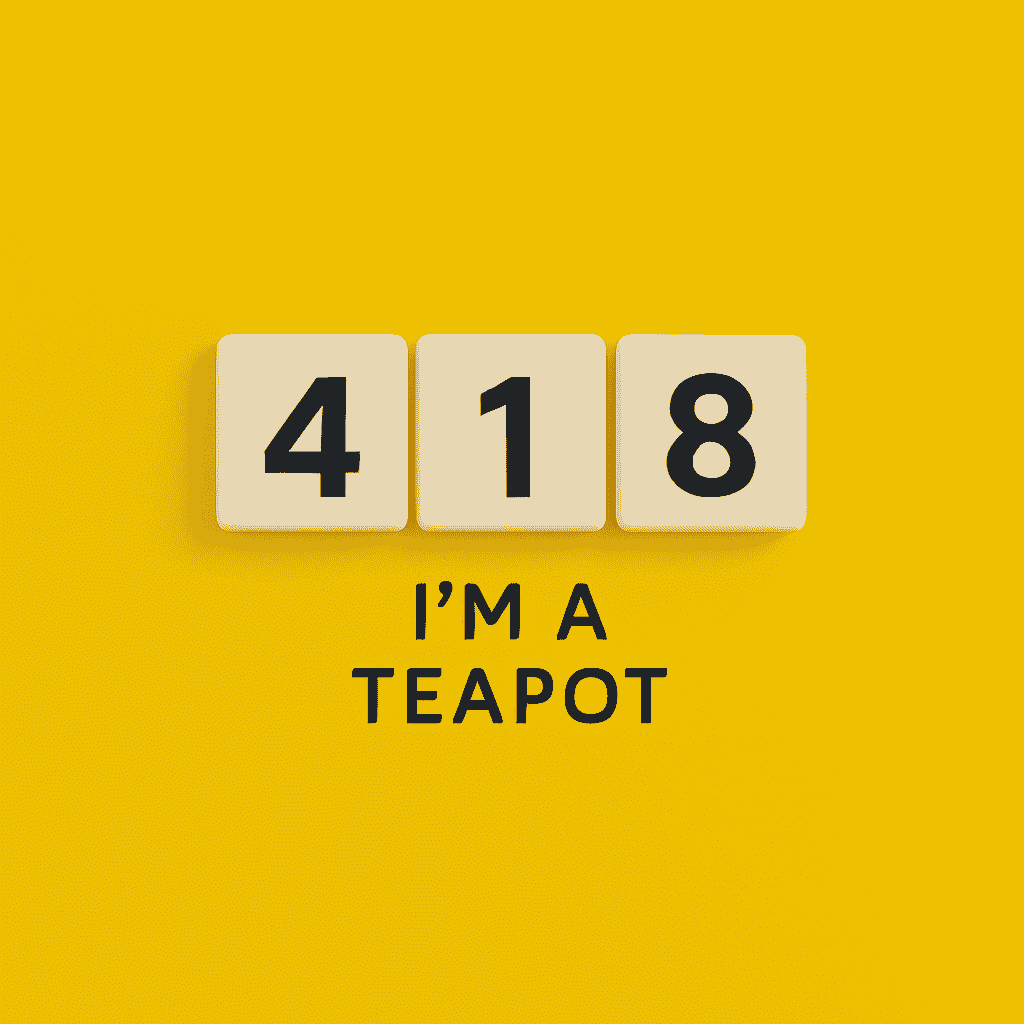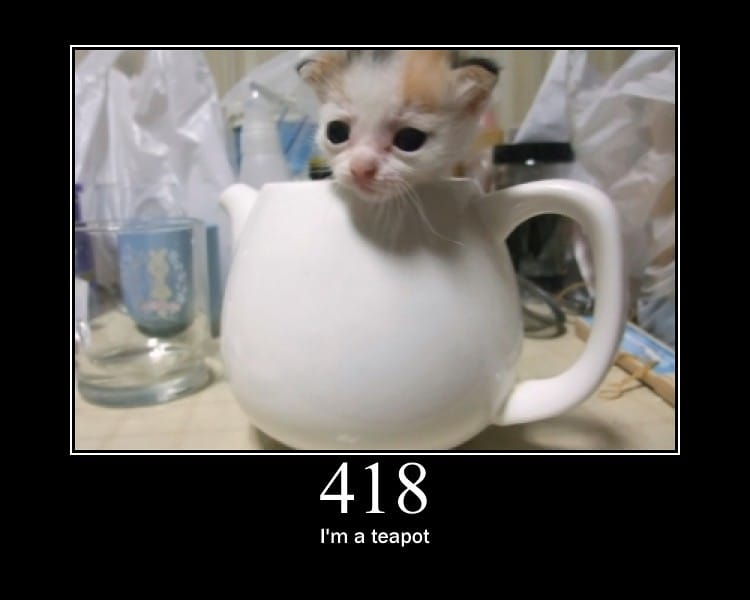
You make a request to a server. Everything seems technically correct, but you get an unexpected response back: 418 I'm a teapot.
Wait ... what?
The 418 status code is no ordinary error message. It is a joke, but one that does form an official part of the HTTP protocol. It is included in RFC 2324, the so-called Hyper Text Coffee Pot Control Protocol (HTCPCP), and intended as an easter egg.
What does the 418 status code really do?
Technically, the 418 status code means, "I'm a teapot, and I refuse to make coffee." It's a response code designed specifically not to be taken seriously. And yet you occasionally see it pop up in APIs, as an easter egg, as a test, or as a nod to developers.
The RFC literally states:
418 I'm a teapot
The HTCPCP server is a teapot. The responding entity MAY be short and stout.
So the code was never intended for production use, but is now so well known among developers that some systems implement it deliberately, for example, to capture a certain behavior with a wink.
When will you encounter a 418 status code?

Fairly rarely. But it happens.
- Some APIs (especially internal or experimental) use the 418 as a placeholder or humorous response to error requests
- In test environments it is sometimes used to check whether clients can properly process unexpected status codes
- Frameworks such as Google's serverless functions or libraries like httpbin have included it for demonstration purposes
So it is not a "real" error message like a 404 or 403, but rather an inside joke with its own status code.
What can you do when you encounter a 418?
Laughter is an option. But if you are seriously working on an application and you get a 418 status code back when you have nothing set up for it, it is good to check:
- Whether your test environment or mock server happened to activate a joke
- Whether you invoke an endpoint equipped with an easter egg by a peer or open source project
- Whether the error message is intentionally used as a capture mechanism outside production
Sometimes the 418 is also used in monitoring or as a recognizable test signal. Precisely because it is so rare, it stands out in logging.
In conclusion
The 418 status code is not a server error, not a client error, and not a best practice. It is a joke with its own RFC, and at the same time a symbol of how Internet culture and technology intersect.
Come across it? Then it's either intentionally meant to be funny, or a hint that you're working with an environment where not everything is deadly serious.
Anyway, now you know what it means: you're talking to a teapot. And it doesn't make coffee.